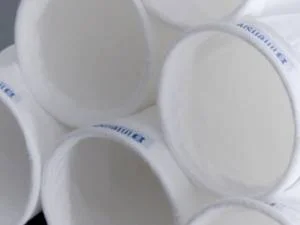Bag Filters
Bag filters are essential components in industrial dust collection systems. They capture particulate matter from air or gas streams. These filters play a key role in maintaining air quality. They help keep the air clean by trapping dust and other small particles. This is important for both workers and the environment.
In many industries, bag filters ensure that companies follow environmental regulations. These rules are in place to protect air quality and public health. By using bag filters, industries can reduce pollution and create safer workplaces. The efficiency of bag filters makes them a popular choice for many businesses. They help keep the air clear while allowing operations to continue smoothly.
Importance of Accurate Bag Filter Capacity Calculation
Accurate bag filter capacity calculation is very important. It helps to ensure that the filter works at its best. When the capacity is right, the filter can handle the workload without any issues. This prevents system overloads and helps to extend the filter’s life.
If the sizing is not correct, it can lead to many problems. These problems can affect how well the filter works and can cost more money in maintenance. Here are some key consequences of incorrect sizing:
- Reduced efficiency: The filter will not work as well, leading to poorer air quality.
- Increased maintenance costs: More repairs and replacements will be needed.
- Shorter filter life: The filter may wear out faster than expected.
- Higher energy consumption: The system may use more power to operate.
- Possible system failure: In severe cases, the whole system can break down.
Correctly calculating the bag filter capacity is essential for smooth operation and cost savings.
Key Parameters in Bag Filter Design
Bag filter design is important for capturing dust and other particles from the air. Key parameters play a big role in how well a bag filter works. These parameters include air-to-cloth ratio, can velocity, and interstitial velocity. Each one affects the filter’s performance.
- Air-to-Cloth Ratio
The air-to-cloth ratio is the amount of air that passes through the filter compared to the area of the filter cloth. It is important because a low ratio means more air flows through the cloth, which can lead to better dust collection. However, too low of a ratio can cause the filter to clog faster. - Can Velocity
Can velocity refers to the speed of air entering the bag filter. This speed is crucial because it affects how well the filter captures particles. If the can velocity is too high, it can push dirt through the filter instead of trapping it. A proper can velocity helps maintain good filtration. - Interstitial Velocity
Interstitial velocity is the speed of air moving between the filter bags. This parameter is significant because it can influence how much dust gets caught. If the interstitial velocity is too high, it may allow dust to pass through the bags. A balanced interstitial velocity ensures effective cleaning.
Here is the table:
| Parameter | Definition | Significance |
| Air-to-Cloth Ratio | The ratio of air volume to filter cloth area. | Affects dust collection efficiency and filter clogging. |
| Can Velocity | The speed of air as it enters the filter. | Influences particle capture; too high can push dust through the filter. |
| Interstitial Velocity | The speed of air moving between filter bags. | Impacts dust capture; too high can allow dust to escape. |
These parameters help engineers design better bag filters. They ensure the filters work well and last longer. Understanding these concepts is key to improving air quality.
Calculating Air-to-Cloth Ratio
Calculating air-to-cloth ratio is important for understanding how well a filter works. The air-to-cloth ratio is the volumetric air flow divided by the total effective filter area. This ratio helps to determine how much air passes through a filter compared to how much surface area the filter has.
The formula for the air-to-cloth ratio is:
Air-to-Cloth Ratio = Q_air / S_filter_effective
In this formula, Q_air represents the total air flow measured in cubic meters per second (m³/s), and S_filter_effective is the filter’s surface area measured in square meters (m²).
Typical values for the air-to-cloth ratio can go up to 0.07 m/s. However, these values can change based on the specific needs of different applications. Understanding this ratio helps in selecting the right filter for various tasks.
Understanding and Calculating Can Velocity
Can velocity is the air velocity in the space between filter bags and the housing. It plays a big role in how well a filter works. If can velocity is too high, dust can re-enter the air. This means that the filter does not do its job well. When dust re-enters the air, it can harm air quality. Understanding can velocity helps in designing better filters.
To calculate can velocity, you can use this formula:
Can Velocity = Q_air / S_chamber
In this formula, Q_air is the airflow rate in cubic meters per second (m³/s). S_chamber is the cross-sectional area of the filter chamber in square meters (m²). Knowing these values helps in determining can velocity and improving filter performance.
Interstitial Velocity and Its Role
Interstitial velocity is the speed of air moving between filter bags. It is an important factor in air filtration systems. This speed helps to prevent dust from getting back into the air. When air moves quickly through the filters, it ensures that dust stays trapped. This process is called pulse cleaning.
To understand interstitial velocity better, one can use a simple formula. The formula is:
Interstitial Velocity = Q_air / (S_chamber – S_section_filters)
In this formula, Q_air represents the volume of air flowing through the system. S_chamber is the total area of the chamber where the air flows. S_section_filters is the sum of the areas of all the filter bags.
Now, let’s break down the calculation process step by step:
- First, find the volume of air, Q_air. This is usually measured in cubic meters per hour (m³/h).
- Next, find the total area of the chamber, S_chamber. This area is in square meters (m²).
- Then, add up the areas of all the filter bags to get S_section_filters. This is also in square meters (m²).
- Finally, plug these numbers into the formula. Subtract S_section_filters from S_chamber. Divide Q_air by this result. The answer will give you the interstitial velocity.
By keeping interstitial velocity at the right level, air filtration systems work better. This leads to cleaner air and fewer dust particles in the environment.
Step-by-Step Guide to Bag Filter Capacity Calculation
To calculate bag filter capacity, follow this step-by-step guide. It includes important factors like dust properties, air flow rates, and system design needs.
- Identify Dust Properties: Start by understanding the type of dust you are dealing with. Check the dust size, shape, and density. These factors affect how the filter works and its capacity.
- Determine Air Flow Rate: Measure the air flow rate in cubic feet per minute (CFM) that will pass through the bag filter. This rate shows how much air the system must handle.
- Calculate Filter Area: Use the air flow rate to find the filter area needed. A common formula is: [ \text{Filter Area} = \frac{\text{Air Flow Rate}}{\text{Velocity}} ] Here, velocity is the speed of air passing through the filter.
- Choose Filter Media: Pick the right filter media based on dust properties and air flow. Different media have different capacities. Ensure the media can handle the dust type.
- Factor in System Design: Look at the overall design of the system. Consider the space available and how the filter fits in. Make sure the design allows for effective dust collection.
- Account for Dust Loading: Understand how much dust the filter will collect over time. This affects how often the filter needs cleaning or replacing.
- Consider Safety Margins: It is wise to add a safety margin to the capacity. This helps to ensure the filter works well even with unexpected dust levels.
- Total Capacity Calculation: Finally, combine all these factors to calculate the total capacity of the bag filter. This gives a clear picture of how effective the filter will be in the system.
Following these steps makes it easier to find the right bag filter capacity for your needs.
Common Mistakes in Bag Filter Sizing and How to Avoid Them
Common mistakes in bag filter sizing can lead to poor filter performance. Many people make errors that affect how well the filters work. Here are some frequent mistakes and ways to avoid them.
- Neglecting Can Velocity: This means not paying attention to how fast air moves through the filter. If the velocity is too high, it can damage the filter. To avoid this, always check the recommended can velocity for your specific filter.
- Miscalculating Air-to-Cloth Ratios: This is about getting the right amount of air for each square inch of fabric. If the ratio is too low, the filter won’t capture enough dust. If it is too high, the filter might clog quickly. To avoid this, use accurate measurements of your system’s airflow and select the right filter size.
- Ignoring Dust Load: Some people forget to consider how much dust the filter will collect. A heavy dust load can overwhelm a filter. To avoid this, estimate the dust load based on the system’s operation and select a filter that can handle it.
- Using Incorrect Filter Material: Different materials work better for different types of dust. Using the wrong material can reduce efficiency. To avoid this, understand the types of dust in your system and choose a filter material that matches.
- Failing to Account for Temperature and Humidity: Some filters work poorly in high temperatures or humidity. To avoid this, check the environmental conditions and select filters that can handle those conditions.
By being aware of these common mistakes, one can ensure better performance from bag filters.
Intensiv-Filter Himenviro: Your Partner in Advanced Filtration Solutions
Intensiv-Filter Himenviro is a global leader in industrial filtration solutions. They have a lot of experience in making air cleaner for many different industries. Their goal is to help businesses meet strict environmental rules. They create solutions that are made just for each customer’s needs. This way, companies can keep the air clean and stay within the law.
Intensiv-Filter Himenviro works with various industries. They understand that every industry has its own challenges. They focus on finding the best filtration systems for each situation. This means their solutions are effective and efficient. With their help, businesses can improve air quality and protect the environment.
Conclusion: Ensuring Optimal Bag Filter Performance
Bag filter capacity calculation is very important. It helps to know how much air a bag filter can handle. Understanding key parameters like can velocity is crucial too. Can velocity is the speed of air entering the filter. If the speed is too high, it can damage the filter. If it is too low, it may not work well.
Readers should apply the methods discussed to improve system efficiency. By doing this, they can make sure the bag filter lasts longer. Proper calculation and understanding can save time and money in the long run. Following these points helps in keeping the bag filter in good shape.



